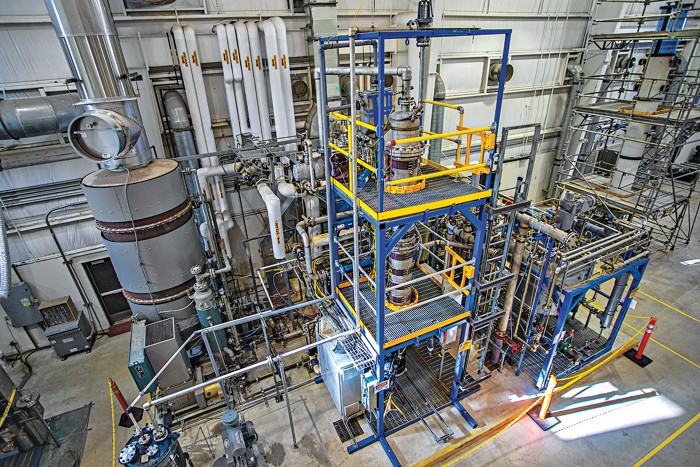Advertisement
Grab your lab coat. Let's get started
Welcome!
Welcome!
Create an account below to get 6 C&EN articles per month, receive newsletters and more - all free.
It seems this is your first time logging in online. Please enter the following information to continue.
As an ACS member you automatically get access to this site. All we need is few more details to create your reading experience.
Not you? Sign in with a different account.
Not you? Sign in with a different account.
ERROR 1
ERROR 1
ERROR 2
ERROR 2
ERROR 2
ERROR 2
ERROR 2
Password and Confirm password must match.
If you have an ACS member number, please enter it here so we can link this account to your membership. (optional)
ERROR 2
ACS values your privacy. By submitting your information, you are gaining access to C&EN and subscribing to our weekly newsletter. We use the information you provide to make your reading experience better, and we will never sell your data to third party members.
Legislation
CCU Parity Act gains chemical industry support
BASF, others urge congress to boost carbon dioxide utilization tax credits
by Craig Bettenhausen
December 14, 2023
| A version of this story appeared in
Volume 101, Issue 41

US support for products that use or chemically convert carbon dioxide would get a big boost from a bill working its way through Congress. The CCU Parity Act of 2023—CCU stands for carbon capture and utilization—would increase the tax credits companies can earn for capturing CO2 and making it into products so that they match credits given for injecting the greenhouse gas into permanent underground storage.
In a letter sent this week to congressional leaders, a group of 55 chemical companies, industrial gas firms, environmental groups, energy companies, and labor organizations urged lawmakers to “ prioritize a targeted suite of small-scale adjustments ” to Section 45Q of the US tax code. One of the signers was BASF, the world’s largest chemical company.
In the current wording of Section 45Q, tax credits for underground sequestration are worth about 40% more than those offered for utilization. Backers of the CCU Parity Act say the disparity pulls CO2 out of the existing industrial market, where supplies have been short since mid-2020, and creates an economic hurdle for start-ups and other firms trying to commercialize new processes that upgrade CO2 into chemicals, fuels, and materials.
A fix is needed, the letter says, to “ensure these technologies can scale at the rate necessary to provide tangible emissions reductions and climate benefits.”
The legislation, S.542 and H.R.1262, would work by defining two categories of CO2 use. One includes most chemical and biological conversion of CO2 as well as industrial uses such as beverage carbonation and refrigeration, a group the bills define as utilization. The other category is the injection of CO2 into spent oil and gas fields to extract petroleum that is otherwise unrecoverable, a practice known as enhanced oil recovery (EOR).
The CCU Parity Act would keep EOR at its current, lower tax credit tier and bump utilization up to the same level as sequestration, according Xan Fishman, director of energy policy and carbon management at the nonprofit Bipartisan Policy Center. EOR is controversial because it unearths petroleum even as it consumes CO2. Critics of subsidies for EOR also argue that the technology and market are mature and therefore not in need of government support.
Chuck McConnell, executive director of the University of Houston’s Center for Carbon Management, argues that lower credits for EOR are a mistake because the technique is ready today to consume large volumes of CO2. Historically, 85% of EOR has been done using mined CO2, but exclusively using captured CO2 would yield “the lowest-carbon-intensity oil produced anywhere in the world,” he says. “There’s a market demand for oil. You want to meet it with the most effective and lowest carbon intensity means that you possibly can.”





Join the conversation
Contact the reporter
Submit a Letter to the Editor for publication
Engage with us on Twitter